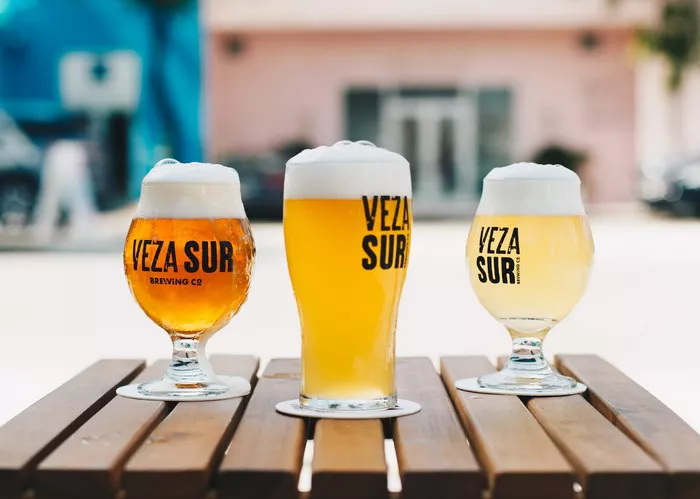Beer, one of the world’s most beloved and widely consumed beverages, comes in a variety of styles and flavors. It’s a go-to choice for many, whether enjoyed during social gatherings, after a long day of work, or as a refreshing accompaniment to a meal. However, for those who are conscious of their calorie intake, it’s essential to understand how many calories are in that pint of beer. In this comprehensive guide, we will explore the calorie content of beer, the factors that influence it, and the impact of various beer styles on your calorie count.
The Calorie Conundrum: What Determines Beer Calories?
Calories in beer primarily come from the alcohol content and any residual sugars. Alcohol is energy-dense, with approximately 7 calories per gram, which is more than carbohydrates or proteins, each containing about 4 calories per gram. The more alcohol a beer contains, the more calories it will have. However, residual sugars, such as those found in sweeter beer styles, can also contribute to the calorie count.
The Alcohol Percentage: A Significant Factor
The alcohol by volume (ABV) of a beer is a critical factor in determining its calorie content. Beers with a higher ABV will have more calories because they contain more alcohol. Light beers, which are specifically brewed to have a lower ABV, typically have fewer calories compared to regular-strength or strong beers.
Light Beer: Lower in Calories
Light beers, often sought after by those looking to enjoy a beer with fewer calories, are brewed to have a lower ABV. As a result, they contain fewer calories per serving. A typical light beer might have around 90-110 calories per 12-ounce (one standard bottle or can) serving, which is often less than half the calories of a regular beer.
Regular Beer: A Moderate Choice
Regular-strength beers, which are often more robust in flavor and alcohol content than light beers, contain more calories. A 12-ounce serving of regular beer can range from 150 to 200 calories, depending on the brand and style. These beers are a balanced choice for those who want to enjoy the full flavor of a beer without excessive calorie consumption.
Strong and Craft Beers: Calorie Considerations
Strong and craft beers are known for their complexity and bold flavors. However, their higher alcohol content often results in more calories. A pint (16 ounces) of strong craft beer can range from 250 to 350 calories, and some exceptionally potent brews can have even more.
Sweet and Flavored Beers: The Sugar Factor
Sweet and flavored beers, such as fruit beers or those with added spices and sugars, tend to have more calories due to the residual sugars used in their production. These beers can range from 150 to 300 calories per 12-ounce serving. While they offer unique and delightful flavors, they should be enjoyed in moderation if you’re watching your calorie intake.
Porter vs. Pilsner: Style Matters
The style of beer you choose significantly impacts its calorie content. For instance, a robust porter or stout will generally have more calories than a crisp and refreshing pilsner or light lager. Choosing a beer style that aligns with your calorie goals can help you enjoy your favorite brew without excessive calorie consumption.
Pint Size: Bigger Isn’t Always Better
The size of the serving glass also plays a role in the number of calories you consume. While a standard 12-ounce bottle or can is commonly used for calorie calculations, pint-sized servings of 16 ounces or more can result in a higher calorie intake. It’s essential to be mindful of the serving size when assessing your beer’s calorie content.
Wine and Spirits: A Comparison
Comparing beer’s calorie content to other alcoholic beverages like wine and spirits provides valuable context. A 12-ounce beer often contains fewer calories than a 5-ounce glass of wine or a mixed cocktail made with distilled spirits. If calorie control is a primary concern, beer can be a more favorable choice.
Moderation and Balance
Ultimately, enjoying beer in moderation is key to maintaining a healthy balance in your diet. While some beers may be lower in calories than others, the most crucial factor is the amount you consume. Keeping an eye on your overall calorie intake, staying hydrated, and pairing your beer with a well-balanced meal can help you enjoy the pleasures of beer while maintaining your calorie goals.
Conclusion
Understanding the calorie content of beer is essential for those who wish to enjoy this beloved beverage while managing their calorie intake. The calorie count of beer is influenced by factors such as the alcohol by volume (ABV), beer style, serving size, and the presence of residual sugars. Light beers tend to be lower in calories, while strong, craft, and sweet beers often contain more. Your choice of beer should align with your taste preferences and calorie goals.


